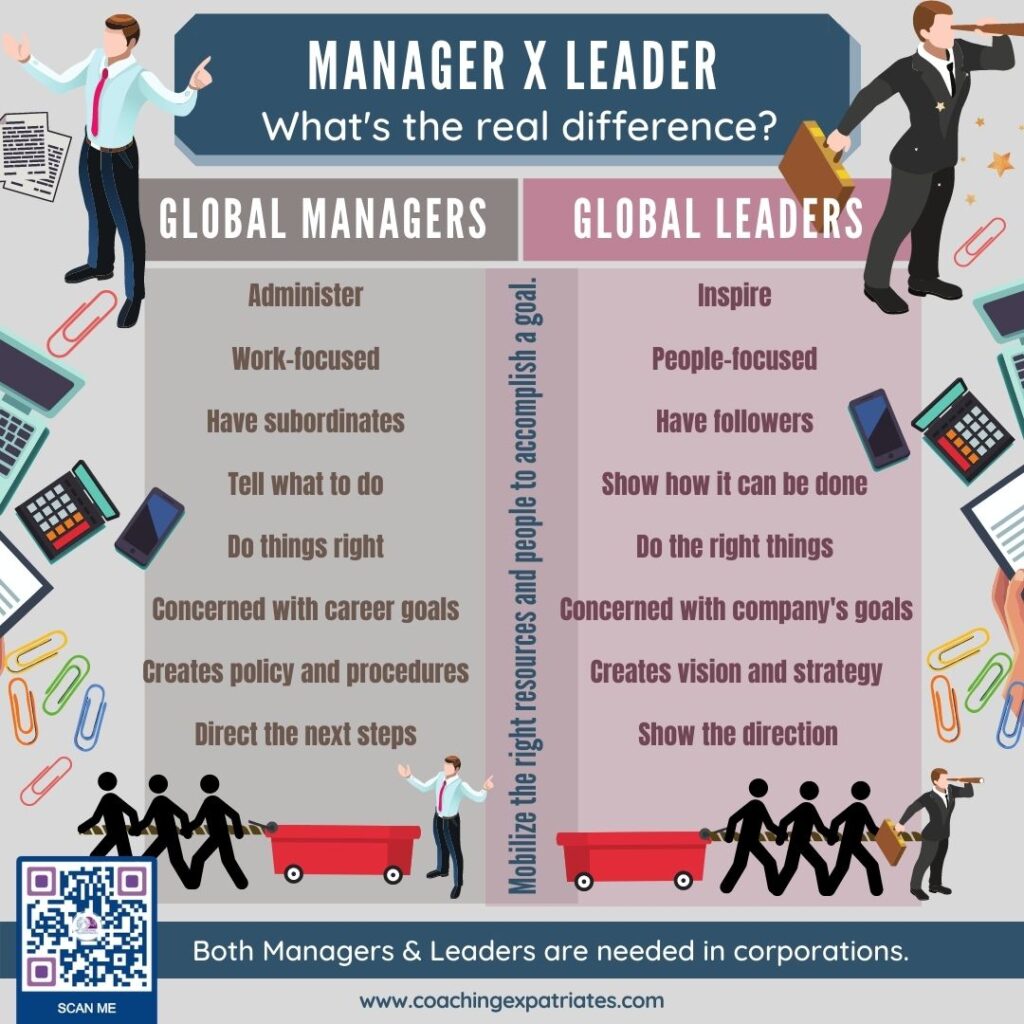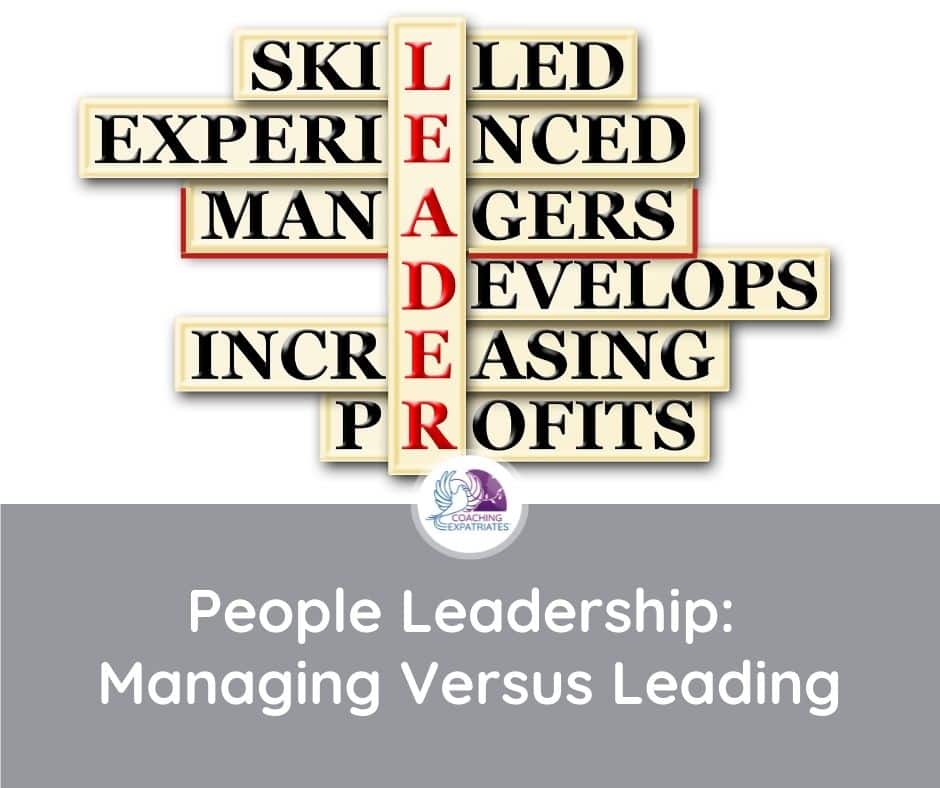I like to read a lot of books and articles on leadership to keep my mind sharp and updated. However, what surprises me is how the internet is flooded with articles like “managers vs leaders” portraying managers in a bad way and leaders in a good way. There is a lot more to the leadership versus management dilemma than one thinks.
In this article, I’d like to discuss my unique view on the point and give some pointers for which situations managers are better suited to work with teams and which leaders are better used instead.
RELATED POSTS:

Managing Versus Leading People
When people start working for a company, either after completing a certification program or a degree, they start focusing on improving their leadership skills to perform better as a leader. They often get confused about managing versus leading, though.
Managers are often selected by the organization based on their skills, knowledge, experience, and expertise. They help employees achieve company objectives by implementing processes and telling people what to do. On the other hand, leaders may or may not have any formal authority over a team but will inspire and show them the direction to achieve a vision and a goal. Leaders help influence the decision-making process to achieve certain desired results.
If you think about an analogy, we can envision a manager behind the workers, supervising their jobs and pushing them forward, while a leader is at the front, showing how it’s done and pulling them throughout a path.

Because successful global leaders are leading the way, they must sometimes look back and ensure no one is left behind. You can achieve that by regular check-ins and by possessing manager coaching skills, which will help you guide your team members, no matter in which step of the path they are.
Aside from these skills, whether you are a manager, a leader, or both, “creating collaborative teams” is also an important skill. Having an “Inclusion mindset” is imperative for any individual dealing with teams. And that’s because it is important to make sure everyone is on the same page and working in the same direction.
Managing Versus Leading People
Being a manager instead of a leader is often portraited as a bad thing in the current thought-leadership world. I like to challenge that a bit. I firmly believe there are no successful businesses only with managers or leaders. We need both of them, as they are a perfect match in heaven to complement each other.
If companies can have individuals that can exercise both leader and manager positions, the better. They will undoubtedly have the strongest competitive advantage in the field of human capital.
Let’s talk about 8 dimensions that are different for managers and leaders and how exactly they complement each other.
Driving Vision: managers administer tasks to achieve a vision while leaders inspire ideas to achieve a vision. Administering tasks is critical to make sure nothing falls through the cracks. Inspiring ideas is imperative for business longevity. In the end, ensuring things don’t fall through cracks plus business longevity are both foundations for business continuity.
Focus: managers are task-focused, while leaders are people-focused. Managers are essential when steps in a process need to be completed timely and efficiently. In contrast, leaders are crucial when ideas need to be pushed towards something more concrete and fruitful.
Team members: managers have subordinates while leaders have followers. Managers are needed when an administrative line is needed for tracking progress, setting goals, assigning training, tasks, and so on. Leaders are needed when a functional line is required to perform an expert function. In these cases, the leader guides the execution and progress of the functional or expert activities. That is why many non-traditional and innovative companies have both the A-Line (Administrative line manager) and the F-Line (Functional line manager) or R-Line (Reporting line manager). More and more companies are adopting matrix lines of reporting like this.
Getting things done: managers tell their team members what to do, while leaders show their team members how it can be done. Managers are needed when companies already have a solid employee Wiki or S.O.P base (standard operating procedure) or very experienced employees. On the other hand, leaders are needed when the knowledge base of a function, department, or the entire company is forming. Showing how it’s done will eventually become part of the knowledge base and help develop company’s best practices.
Chain of command: managers do things right, while leaders do the right thing. If we make a military analogy, managers are like the captains and officers giving orders and doing things right, in the correct sequence, with the proper procedure, with the right care. On the other hand, leaders are the Intelligence Agency that gathered information and created the decisions that the military chain of command will follow. Leaders do the right things to create a chain of effects that will lead to the desired results.
Goal orientation: managers are concerned with career goals, while leaders are concerned with the company’s goals. During performance reviews, individuals are usually tasked with being both leaders and managers. Managers have to think about their employees’ careers and make decisions to help them develop and grow. Leaders have to think about the company’s goals and where exactly that resource fits into the company’s strategy. Leaders will end up having to think about succession planning, how to quickly backfill positions, and adjust tasks according to employee and company’s needs. During performance reviews, the reviewers must both wear the manager and leader hats, as you can see.
Decision-making priorities: managers create policies and procedures, while leaders create vision and strategy. As you can see, both of these things are needed in a company. Strategy cannot live without operational procedures, and policies and procedures will not hold any alignment if not weaved by strategy and vision.
Inclination: managers direct the next steps while leaders show the direction. Quite the opposite from getting things done above, managers are more needed when a lot of newbies are admitted to a team. In this case, step-by-step orientation, assignment, and training are required until the team member gets the hang out of things. On the other hand, leaders are needed more when you have very senior and experienced team members that don’t need very specific and step-by-step instructions. In this case, team members will appreciate the direction and general guidelines, as they can decide for themselves what and how to do things based on their experience and knowledge.

As you can see, no company can get away only with leaders or managers. There is no such thing as “having manager traits is a bad thing” and “leaders traits is a good thing.” This is only an illusion put together by marketeer thought-leaders.
Every company needs managers and leaders. If companies are able to hire people that display both manager and leader traits, even the better. It will certainly cost a lot less for the company, although it will be a lot more challenging to keep up with and retain such exceptional talent.
Now, if you are not neither a manager nor a leader yet, and are thinking, “which set of traits should I focus on learning first then?”
The answer is: which one seems more comfortable to you at first. Some people are naturally inclined to manager traits, while others are more inclined to leaders traits. It does not mean you cannot pursue the other later. So long you never forget to do so.
However, based on my experience and my very personal opinion, I’d like to say that managers can get away with only being managers, but it’s far more difficult for leaders to do so.
Leaders who suck as managers tend to be let go sooner or later. Managers who suck at being leaders may not be let go but will experience a lot of stuckness in career progression. So no matter which one you start with, you’ll need to learn both eventually.
Managers can become good managers by gaining business acumen and sticking a while to their roles until they get the function well enough to manage other people. On the other hand, leaders become good leaders by attending Executive Leadership Programs and putting what they learned into practice.
Although these are 2 different paths, I’ve seen numerous people get both done simultaneously by learning on the job to become a good manager while also attending an executive program to prepare for higher leadership positions.
What matters is your career strategy and how long you want it to take, and having a career growth plan is fundamental for that. In it, you will map your growth path and each step you need to take to grow.
Now that you know the main differences between managers and leaders, you can take the right steps in your career development. Find yourself an accountability partner, a few mentors, an excellent executive coach, and kick-ass as an awesome global leader manager.
If you are interested in improving your people leadership skills and want to learn step-by-step how to improve them, check out our Global Executive Leadership Program. We go over all 4 success pillars of global leadership during 9 online modules, including 2 dedicated modules on people leadership.
In case you have a specific people leadership skill in mind to develop or a situation in which you feel stuck, you can purchase one of our executive coaching packages. We can help you sort the issue or topic out during your program and find the best course of action to make things better for you and your team. Executive coaching can be a powerful tool in people leadership.
If you appreciated this post, consider subscribing to our incredible newsletter using the form below. We focus on providing good content to global corporate executives who want to make impactful business decisions and be more inclusive and influential. We know your inbox is sacred, so we email just once per week, and we never sell your information. Trust is the basis of global leadership, and we fully honor it.










